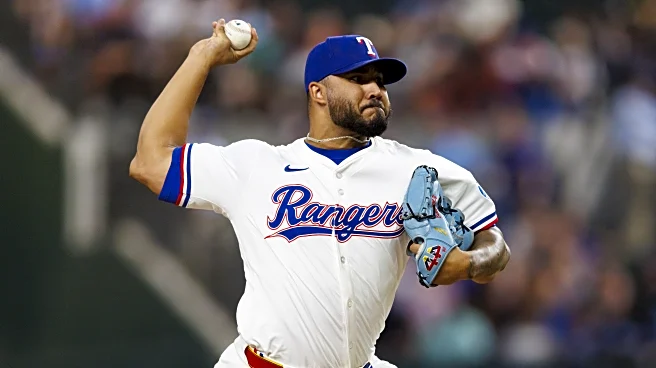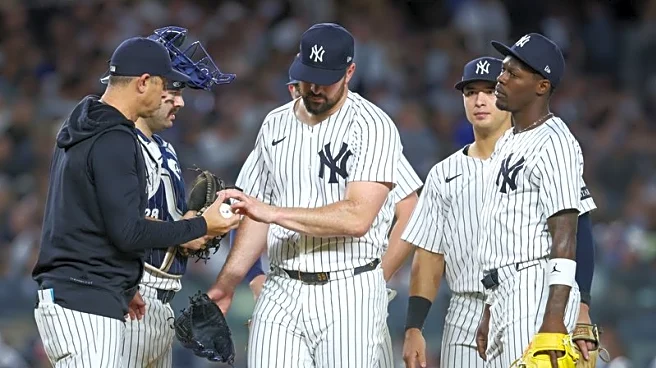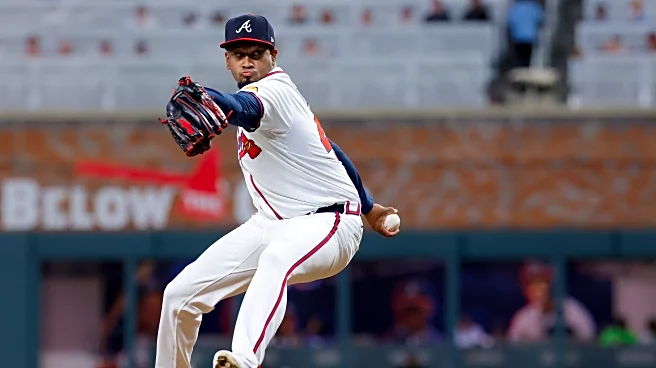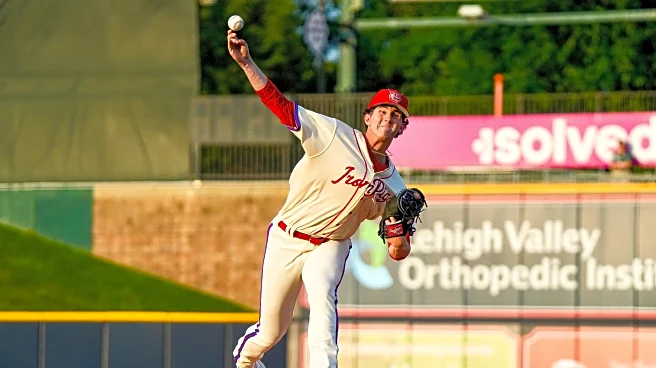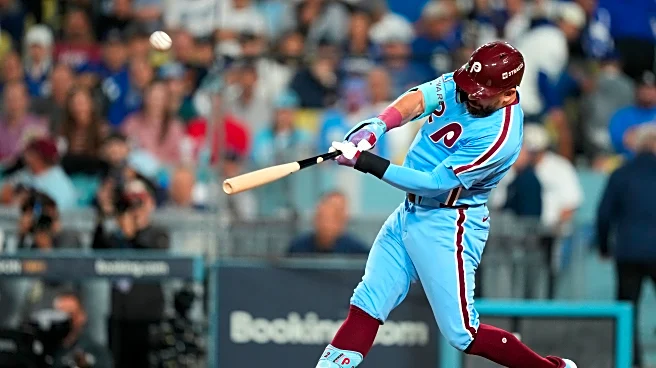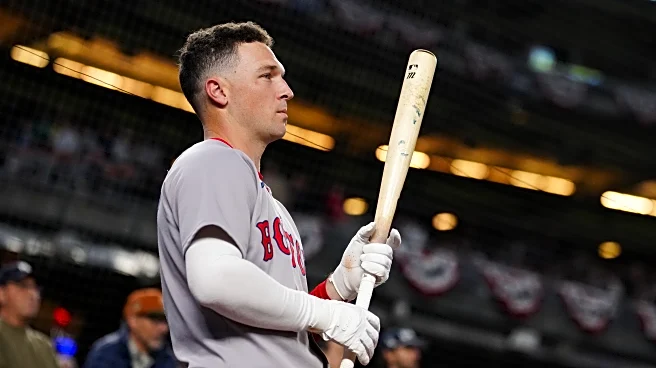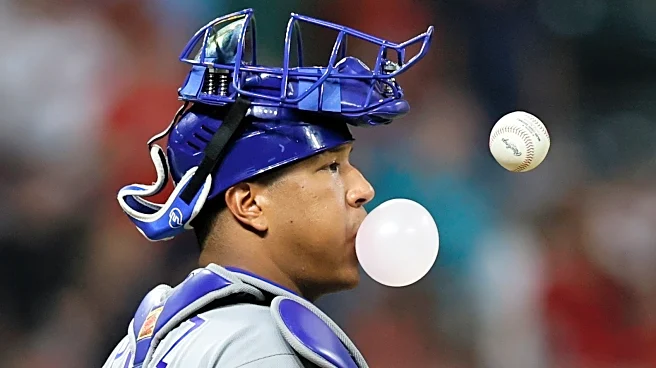With the 2025 Texas Rangers season having come to an end, we shall be, over the course of the offseason, taking a look at every player who appeared in a major league game for the Texas Rangers in 2025.
Today we are looking at Luis Curvelo.
The signing of Luis Curvelo was one of the first moves the Texas Rangers made last offseason, once the offseason officially started. The offseason officially starts the day after the World Series ends — that’s the day players who aren’t under contract or team control become free agents. However, they can’t sign with another team until 5:00 p.m. Eastern Time on the fifth day following the World Series. That fifth day is when the transactions pages will reflect that a player officially becomes a free agent.
Luis Curvelo is officially recorded as having become a free agent on November 4, 2024, five days after the Los Angeles Dodgers finished off the New York Yankees on October 30, 2024, in Game 5 of the World Series. Curvelo was a minor league free agent, having spent his entire professional career up to that point with the Seattle Mariners.
Less than a week later, it was being reported that the Rangers were close to signing Curvelo to a major league deal. The Rangers officially announced the signing on November 13 — the same day, coincidentally enough, that they announced that Skip Schumaker had joined the team’s front office.
Every team scouts and maintains a file* on every player in affiliated ball, along with a bunch of amateurs, players in Indy ball, players playing overseas, and the like. Actually I don’t know 100% this is true — I can’t promise you that the Washington Nationals maintain records on Rosnel Alarcon, a 17 year old outfielder from Venezuela who played for the Rangers Blue team in the Dominican Summer League this year — but I assume it is.
* An electronic file, of course, though I like the visual of there being a big-ass room deep in the bowels of the Shed, crammed full of file cabinets, each stuffed to overflowing with manila folders containing records of every professional player.
Teams are going to be tracking players who are eligible for free agency after the season, and identifying players that they are going to prioritize trying to sign once they hit the free agent market. The Rangers clearly had Curvelo as one of the top minor league free agents they were pursuing, in light of the short amount of time that elapsed between his becoming a free agent and the Rangers reaching a deal with him, as well as the fact that the Rangers signed him to a major league deal.
Most minor league free agents don’t end up getting major league deals since, well, if they were good enough to get a major league deal, the club they were with would have added to their own 40 man roster. That is particularly the case with someone like Curvelo, who had never pitched above AA when the Rangers signed him (and had never pitched above A ball prior to 2024). I mean, someone like Jarred Kelenic or Abraham Toro, to pick two prominent guys who are going to be minor league free agents once the Dodgers and either the Jays or M’s finish playing in the World Series, could well get a major league deal, but a guy with no AAA experience, much less major league experience, is more rare.
You may recall the Rangers gave free agent reliever Joe Gatto a major league deal after the 2020 season. He was an Angels second round pick in 2014 who had never pitched above AA, but who the Rangers liked enough to give him a major league contract. He had a terrible spring, was waived and outrighted before the season even started, and spent all of 2021 in the minors before becoming a minor league free agent once again after an underwhelming season in the minors.
The Rangers also signed Warner Madrigal to a major league deal after the 2007 season. That one was kind of fun because he had been in the Angels’ organization, and the Angels had sent out a press release a couple of weeks prior that announced that he had been added to Anaheim’s 40 man roster. The problem was that they missed the deadline for being able to unilaterally purchase Madrigal’s contract — they waited until after the World Series, at which point Madrigal was a free agent and could sign with any team, and opted to sign with Texas instead of Anaheim.
Aside from the circumstances surrounding his signing, Madrigal is probably best remembered for making his major league debut at Yankee Stadium, in the bottom of the seventh inning, when he was asked to preserve a 7-6 lead. The Rangers lost that game 18-7. Madrigal faced seven batters, retired one of them, and Ron Washington was criticized for not having found a way to get Madrigal into a game prior to that point, allowing him to get his feet wet in a less pressure-packed situation, as well as for using Madrigal in such a high-leverage situation.
Madrigal allowed six runs in that game. Jamey “The Electrician” Wright, who came into the game in relief of Madrigal, also allowed six runs. Luis Mendoza, who started for the Rangers, allowed six runs. Joaquin Benoit was the only Ranger pitcher to pitch in the game and not allow a run. Quite a collection of late-aughts Rangers names.
Anyway, Curvelo was on the 40 man roster, spent the first few months of the 2025 at Round Rock, was okay, and I kept expecting him to be DFA’d every time the Rangers needed a 40 man roster spot. Not only did he persevere in maintaining his 40 man spot, he was called up at the end of July, and spent most of the final two months of the season in the majors.
How did Curvelo perform? Meh. 5.68 ERA in 19 innings over 17 games. 4.66 FIP, though with a 3.78 xERA, so that’s something. Curvelo threw hard, walked too many batters, and didn’t strike out enough guys.
Curvelo threw both a fastball and a sinker, along with a slider, in 2025, and he got lit up on his slider, allowing a .432 wOBA and .358 xwOBA. You are not supposed to get slapped around off of your primary non-fastball pitch, but in looking at his heat maps, both his fastballs were primarily located down and arm side in the strike zone, while his slider map shows, like, a red dumbbell, with one end low and arm side and the other end middle of the zone arm side. You can see the heat maps here.
You generally don’t want all your pitches to end up in the same part of the strike zone all the time, since that makes it a lot easier for hitters. And you generally don’t want to leave your sliders in the middle of the zone, since that’s a good way to inflate your slugging percentage. Curvelo allowed three homers in his 19 innings in the majors, two of them off of sliders. The other homer was the walk off Pete Alonso bomb in the 10th inning at Citi Field on September 14, the game that began the 8 game losing streak that ended the Rangers’ playoff hopes.
That was one of two games where Curvelo gave up multiple runs. The other was his fourth career outing, in early August. He was brought into a game against the Phillies in the eighth inning, with the Rangers down 4-1. He struck out the side (with a single mixed in, if you don’t like me saying he struck out the side when there was a single mixed in, take it up with Levi Weaver), and thus was asked to also pitch the top of the ninth.
Things didn’t go so well in the ninth. The Phillies loaded the bases with two outs, Curvelo got up 0-2 on Bryson Scott, then gave up a line drive double on a slider. Trea Turner followed that up with a homer (on a slider, of course), and Curvelo saw his ERA, in the course of about ten minutes, go from 0.00 to 7.11.
Two really bad innings for Curvelo resulted in eight of the 13 runs he allowed in the season, though that’s kind of the nature of being a reliever, I guess.
So there were things to like from Curvelo in his limited opportunities. If he tightens up his command of his slider he could be a useful middle reliever. Otherwise, he’s a guy who you can send up and down as need be, bringing him up when you need an arm in the pen for a spell and sending him back down when you don’t.
Not bad for a guy I expected to be on the waiver wire before Memorial Day.
Previously:
